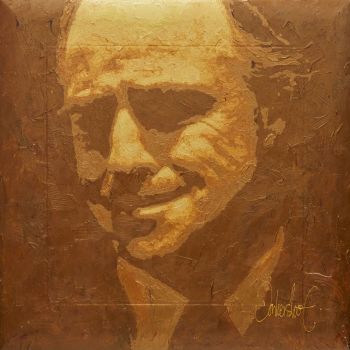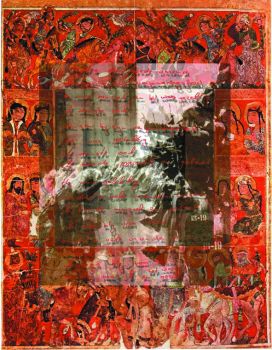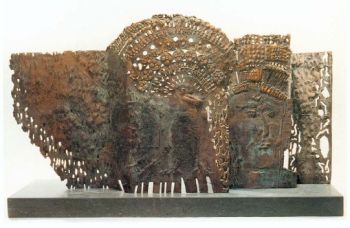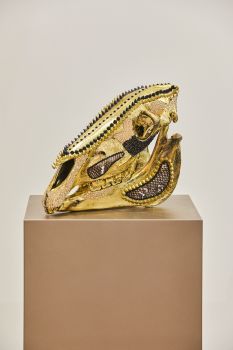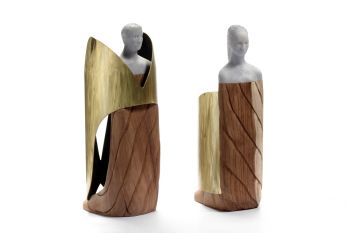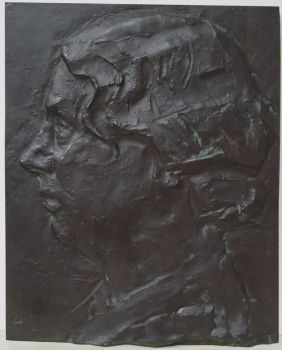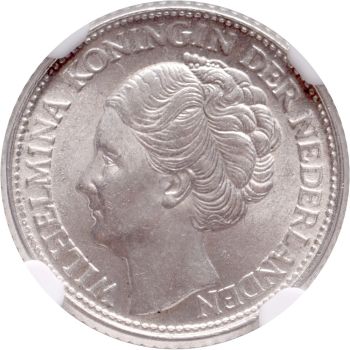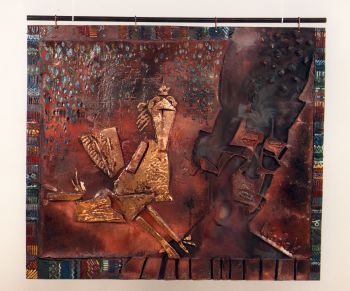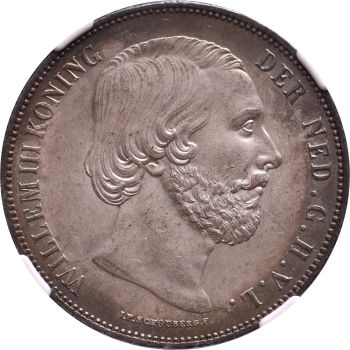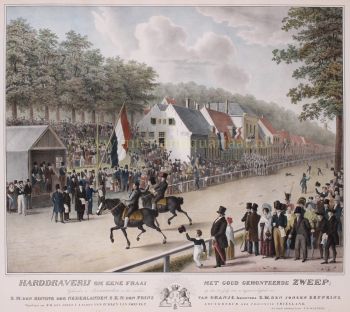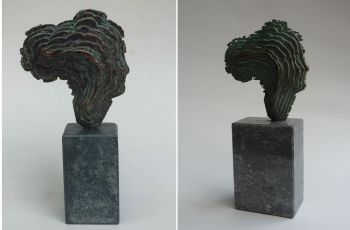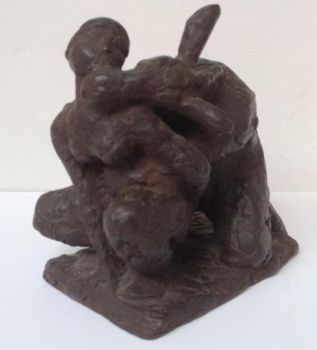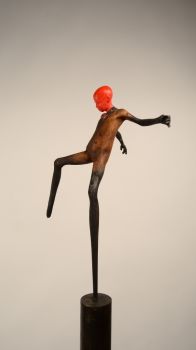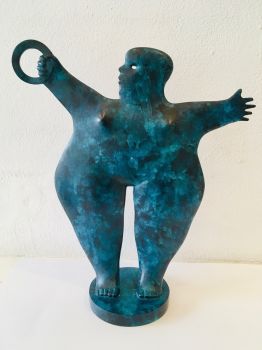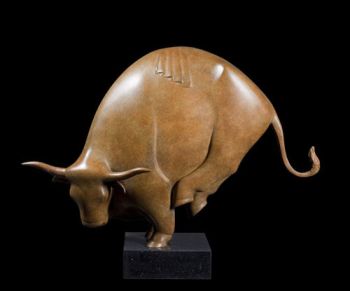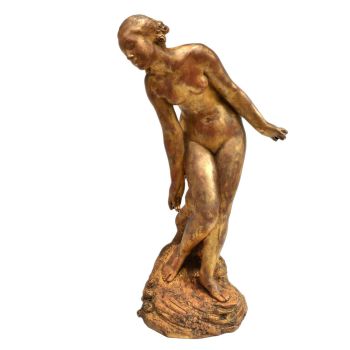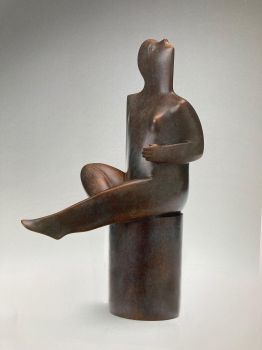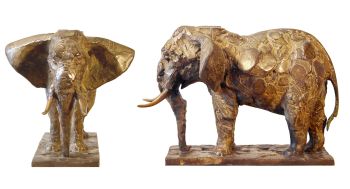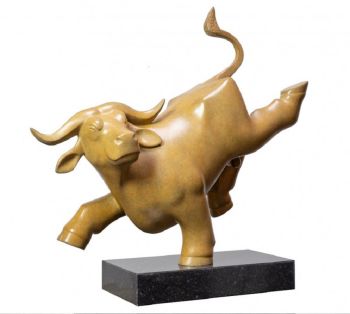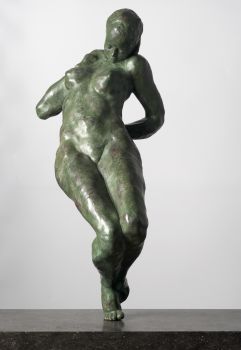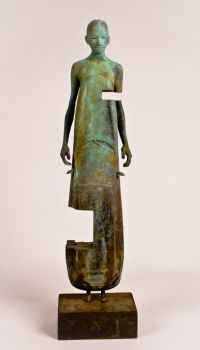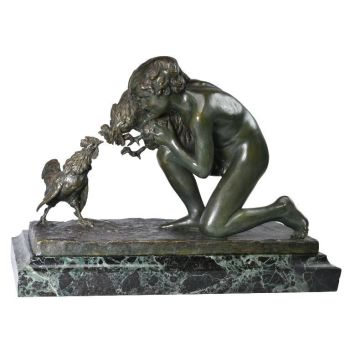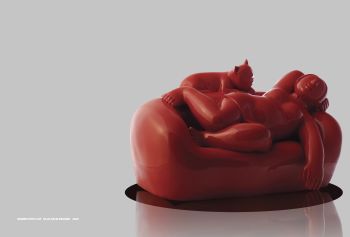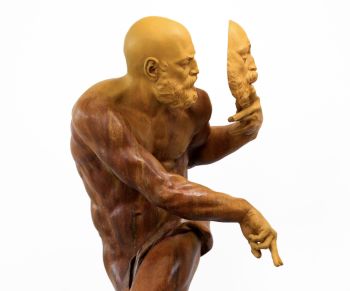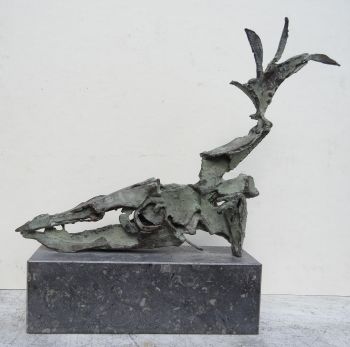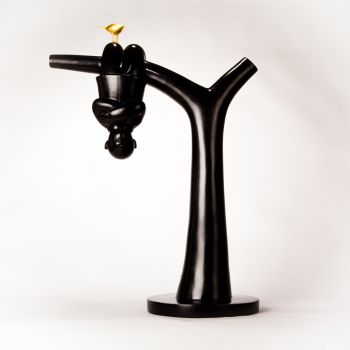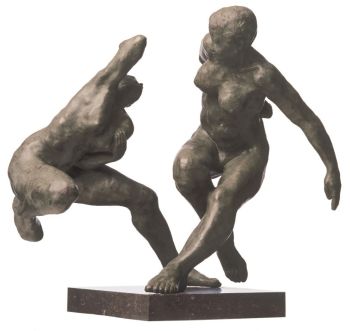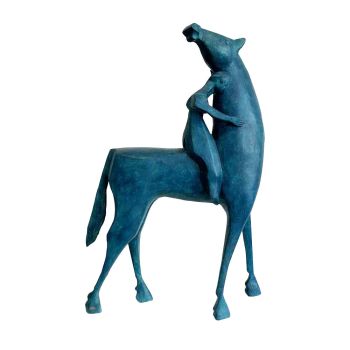French Louis XVI Portico Clock 1779 - 1781
Artiste Inconnu
MarbrePierreBronzeMétalÉmail
63 ⨯ 48 ⨯ 17 cm
Actuellement indisponible via Gallerease
- Sur l'oeuvre d'artOn eight gilt bronze feet a moulded white marble plinth decorated with ormolu rosettes, panels and beaded bands. On the left and right on a slightly higher level and surrounded by ormolu posts, two high black marble bases support two inverted white marble fasces topped by ormolu armillary spheres. Between these bases a seated ormolu lion looks upwards towards the clock above. The clock is suspended from both the black marble bases as from the fasces. On top of the clock, on his own black marble base, an ormolu statuette of the Roman god Mars.
On the clock the white enamel dial shows three rings: the inner one with Arabic numerals for the date, the middle ring with Roman numerals for the hours and the outer ring indicates the minutes. Two pierced gilt brass hands for the hours and minutes and one steel pointer for the dates. The movement with anchor escapement and a duration of eight days. The pendulum disk in the form of an Apollo mask surrounded by the rays of the sun.
The ormolu decorations on the black marble bases consist of war trophies with scaled shields, quivers with arrows, halberds and flags, the whole topped by palm leaves as a symbol of victory. The very unusual inverted fasces are, even more unusual, topped by armillary spheres and moreover flank Mars, the god of war.
If this clock tells us something, it might be this: After the victories of war (trophies and palm leaves), man should bury his arms (inverted fasces) and concentrate on science and arts (the spheres).
After all, this clock was made in the age of reason when the purpose was to advance knowledge by scientific methods. Astronomy was one of the seven liberal arts (sciences) of the Renaisssance and astronomical discoveries concerning the moon, earth and sun were made around 1740-1770. These discoveries were being published by the French Académie des Sciences during the second half of the century.
The white enamel dial unsigned, but marked “à Paris”. - Sur l'artiste
Il peut arriver qu'un artiste ou un créateur soit inconnu.
Certaines œuvres ne doivent pas être déterminées par qui elles sont faites ou elles sont faites par (un groupe d') artisans. Les exemples sont des statues de l'Antiquité, des meubles, des miroirs ou des signatures qui ne sont pas claires ou lisibles, mais aussi certaines œuvres ne sont pas signées du tout.
Vous pouvez également trouver la description suivante :
•"Attribué à …." A leur avis probablement une oeuvre de l'artiste, au moins en partie
•« Atelier de …. ou « Atelier de » À leur avis, une œuvre exécutée dans l'atelier ou l'atelier de l'artiste, éventuellement sous sa direction
•« Cercle de… ». A leur avis une oeuvre de la période de l'artiste témoignant de son influence, étroitement associée à l'artiste mais pas forcément son élève
•« Style de … ». ou "Suiveur de ...." Selon eux, une œuvre exécutée dans le style de l'artiste mais pas nécessairement par un élève ; peut être contemporain ou presque contemporain
•« Manière de… ». A leur avis une oeuvre dans le style de l'artiste mais d'une date plus tardive
•"Après …." A leur avis une copie (quelle qu'en soit la date) d'une oeuvre de l'artiste
•« Signé… », « Daté… ». ou « Inscrit » À leur avis, l'œuvre a été signée/datée/inscrite par l'artiste. L'ajout d'un point d'interrogation indique un élément de doute
• "Avec signature ….", "Avec date ….", "Avec inscription …." ou "Porte signature/date/inscription" à leur avis la signature/date/inscription a été ajoutée par quelqu'un d'autre que l'artiste
Artwork details
Related artworks
Artiste Inconnu
Néerlandais en miniature (Netsuke)1700 - 1900
Prix sur demandeZebregs & Röell - Fine Art - Antiques
1 - 4 / 12- 1 - 4 / 7
Artiste Inconnu
UN RARE GRAND TÉLESCOPE EN CUIR LAQUÉ JAPONAIS1750 - 1800
Prix sur demandeZebregs & Röell - Fine Art - Antiques
Artiste Inconnu
UN MODÈLE JAPONAIS D'UN NORIMONO, UN PALANQUIN1650 - 1700
Prix sur demandeZebregs & Röell - Fine Art - Antiques
1 - 4 / 24Lambertus Zijl
Portrait of Juliana, queen of the Netherlands (1948-1990)1900 - 1950
Prix sur demandeKunsthandel Pygmalion
Artiste Inconnu
Bracelet en diamant du XVIIIe siècle avec intailles vieilles de 2000 ans1790
€ 23.000Adin Fine Antique Jewellery
 Sélectionné par
Sélectionné parDanny Bree
1 - 4 / 24- 1 - 4 / 24








